The Definitive Sennheiser E835 review
Is this simple vocal mic even better than the Shure SM58?
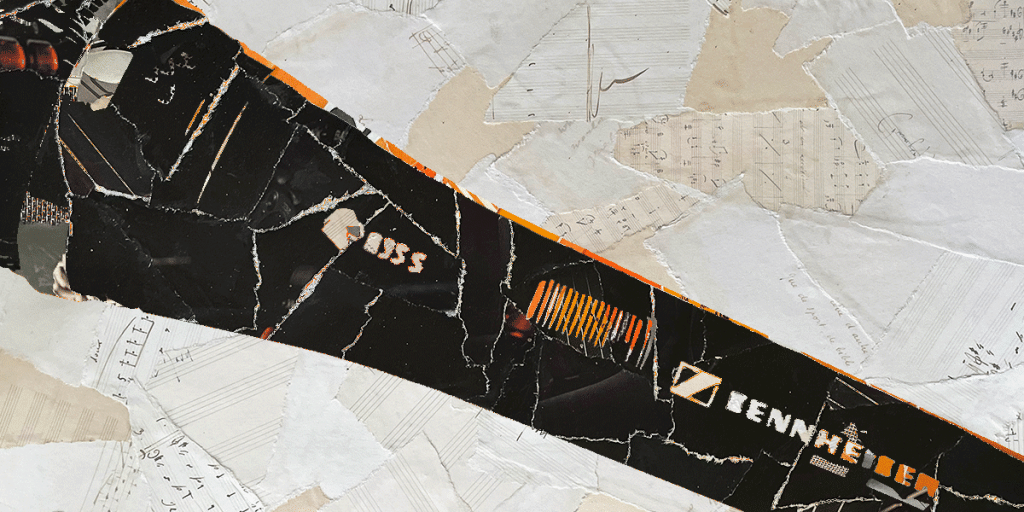
Reviewed by: Paul Narang
Review date: August 2022
Price: Under $100
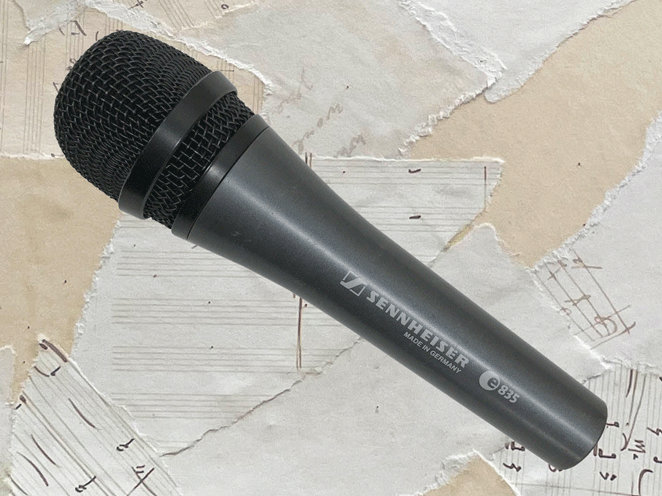

Sennheiser E835 Review
| Pros: | Cons: |
| Good value Clear sound cuts through the mix Rugged construction | Not as warm as the SM58 |
Sennheiser E835 Review
A rugged vocal microphone offering a clear sound and clean design. A fantastic choice for both live use and the home recording studio.
What is it?
Sennheiser are one of the most well known microphone manufacturers, with a professional user base across broadcast, live music and recording studios.
They bought out their budget Evolution range in 1998 to make their microphones available to home recording studios and gigging musicians.
Evolution range evolved into today’s entry level 600 and 800 series, as well as the more expensive 900 series. While the 600 series is primarily for instruments, the 800 range are all dedicated vocal microphones.
They include the E835 dynamic mic reviewed here, the similar E845, and the condenser E865 microphone. Each of these 3 models are also available with on/off switches (E835 S, E845 S and E 865 S).
The Sennheiser E835 is a simple metal body mic with a cardioid polar pattern. It’s designed to be hand held, with minimal handling interference. It’s a very popular mic, and seen as the rival to the Shure SM58. So how does it perform in our Sennheiser E835 review?
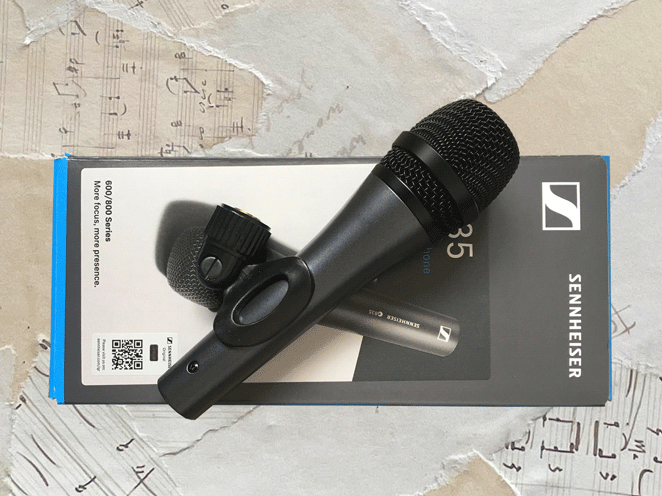
In the box
The Sennheiser E835 mic arrived in a smart blue and white cardboard box which also included:
- MZQ 800 microphone clamp
- Zip up microphone pouch
- User manual
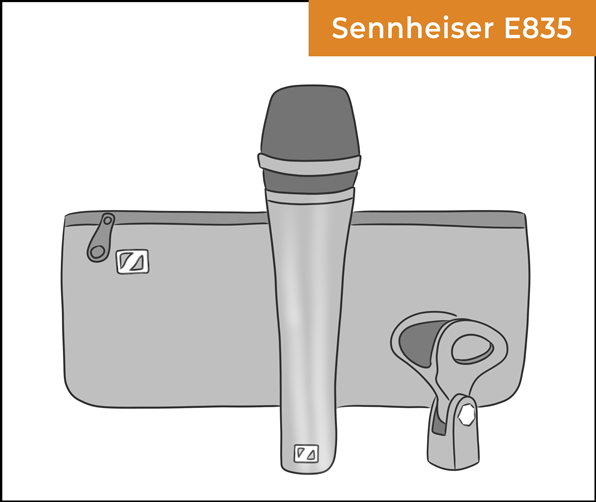
Dynamic vs condenser microphone
The Sennheiser E835 (and E835 S) is a ‘dynamic’ microphone. Dynamic microphones differ to ‘condenser’ microphones in the following ways:
- They’re less sensitive
- They’re more rugged and durable for live use
- They’re cheaper
- You can plug and play without power
E835 Polar pattern
Like many dynamic microphones the Sennheiser E835 uses a cardioid pickup pattern, which is a heart shape. It picks up sound from the front, but rejects sound from the back and sides. This makes it ideal for use on stage, where you can isolate the vocals from other noisy instruments.
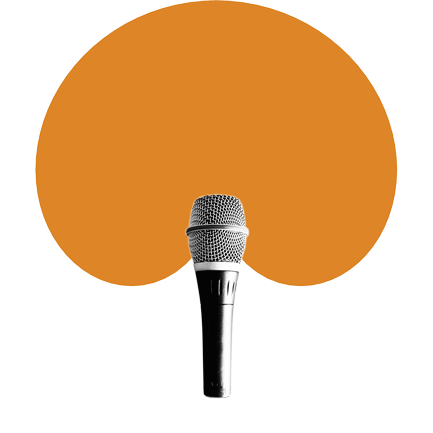
The cardioid pattern is also ideal for a home studio where the acoustics are less than ideal. It will pick up the sound of the vocalist in front of the mic, while rejecting the sounds of the room. And being a dynamic mic, it won’t pick up unwanted distant sounds, like traffic rumble or noisy neighbours.
E 835 vs E 835S
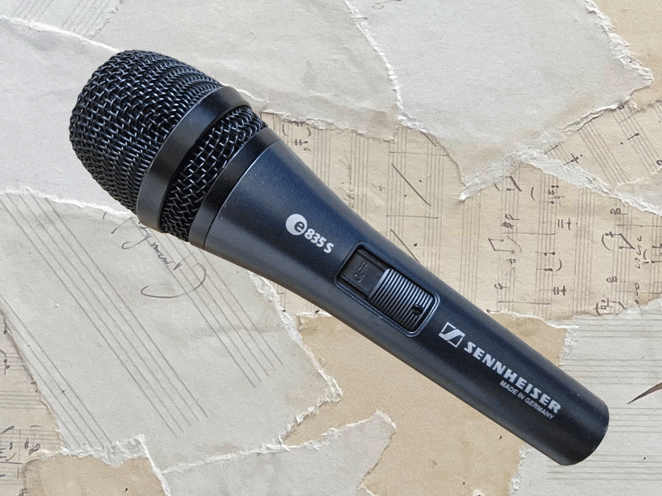
The Sennheiser E835 microphone has no on/off switch, whereas the E835S is the version with a switch. The switch has a tiny screw which locks it into position when necessary.
Connecting the Sennheiser E835
The E835 (and E835 S) uses an XLR cable to connect directly to an audio interface or mixer. XLR connectors are found on professional studio equipment. They’re ‘balanced’, which means the cables are shielded from interference and carry a higher signal than unbalanced cables.
If your audio interface or mixer has 1/4″ jack inputs, you’ll need a cable with an XLR connector on one end, and a 1/4″ jack on the other, like this. Keeping cable lengths to a minimum is good practice to maintain the best signal.
The Sennheiser E835 Design and build
The Sennheiser E835 is a simple, sturdy mic which doesn’t have a lot of features or moving parts to go wrong. The only moving part is the on/off switch on the E835 S model. This makes it particularly suitable for live use.
Like the other mics in the Evolution range, the E 835 has an attractive classic microphone design. It’s small and lightweight at 330g (0.73 lb), and with a diameter of 48mm, fits neatly in the hand. The length is 180.5mm (7.11″), which is just under 2cm taller than the Shure SM58.
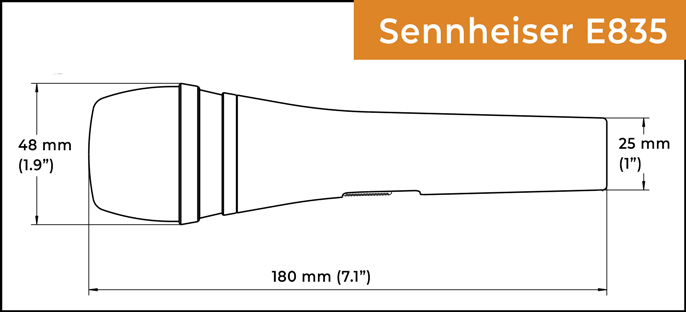
Reassuringly solid, the main dark grey body is made of metal, and there’s a strong black metal grille protecting the top. The grille can be unscrewed, so that the foam insert can be removed for cleaning or replacing.
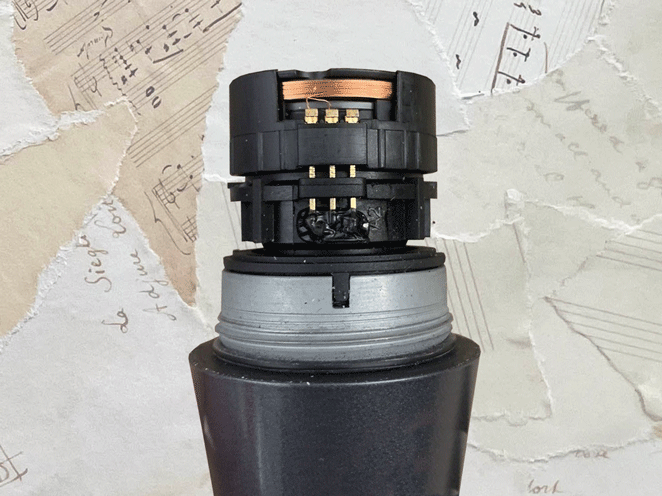
Inside the mic is a humbucking coil, which effectively cancels electromagnetic hum, ensuring a clean signal. And an elastic capsule suspension isolates handling noise, so you can hold the mic with the confidence that it won’t interfere with the sound.
The E835 has a strong neodymium ferrous magnet which ensures microphone stability in temperatures between 0° and 40° Centigrade.
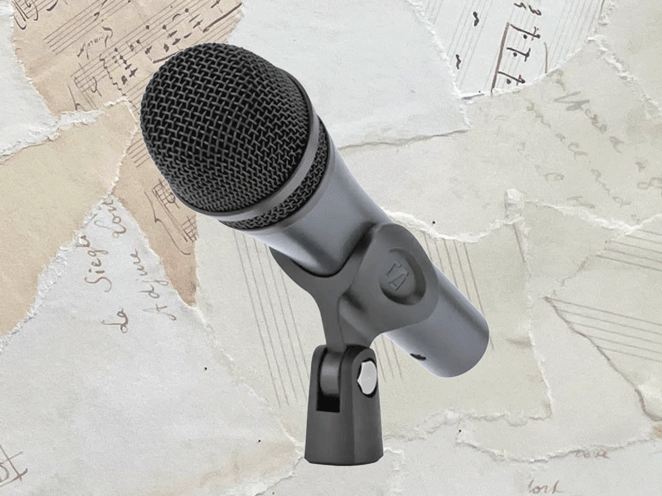
The Sennheiser E835 S has the inclusion of an on/off switch, and a little screw which can be turned to make sure you don’t accidentally switch the mic off during a performance.
It’s a strong robust design, with little to go wrong. Both the E835 and E835S come with an industry leading 10 year warranty.
E835 Frequency range
The Sennheiser E835 has a stated frequency range of 40 Hz to 16 kHz. This is a wide range, suitable for male and female vocals or speech.
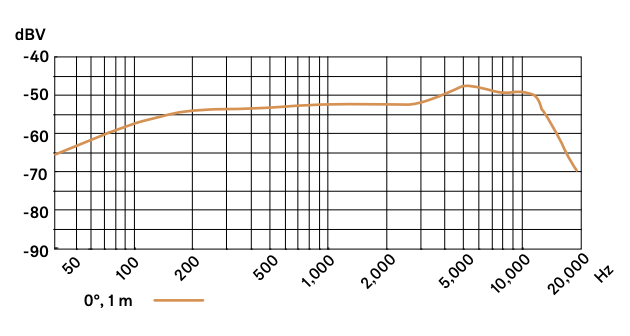
The frequency chart shows the E835 mic to be reasonably flat, with a peak around 5 kHz, and a gradual tail off at around 10 kHz. The upper mid range peak, between around 5 and 10 kHz is typical of a vocal mic. It gives them them some presence, a bright lift and sparkle.
E835 Sensitivity and impedance
As a dynamic mic, the Sennheiser E835 is of low sensitivity when compared to a condenser mic. Low sensitivity is great for isolating the sound being picked up, as well as making it ideal for loud sound sources. This mic has the ability to handle a staggering 150dB SPL.
And like most professional microphones, it has a low output impedance, stated as having a nominal impedance of 350 Ω. This makes it a good performer across long cable runs, and less susceptible to external interference.

E835 Sound quality
Vocals on the Sennheiser E835 microphone have the ability to really cut through the mix without relying on EQ adjustments.
I’d describe them as bright mics, but not harsh. The sound is clear and crisp, full of presence. They’re well suited to both speech and vocals, affording them a nice clarity and intelligibility.
They have a natural sound, which doesn’t get too boomy when in close proximity. This might take some getting used to if you’re used to mics with a pronounced boundary effect. You definitely won’t find the muddy lows that other handheld dynamic mics in this price range sometimes exhibit.
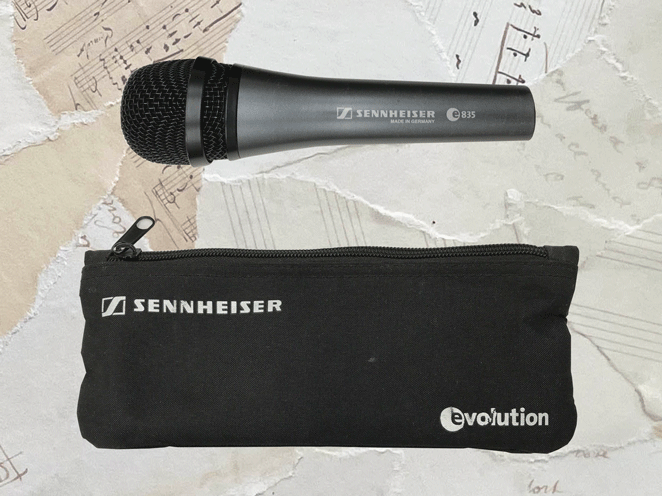
Sennheiser E835 in Performance
The E835 really comes to life on stage, where the noise handling and anti-interference features make it a pleasure to use.
The cardioid polar pattern keeps feedback at bay, even at decent volume levels. There’s some room to move off-axis, though I found it to work best when positioned directly on-axis.
Sennheiser E835 vs Shure SM58
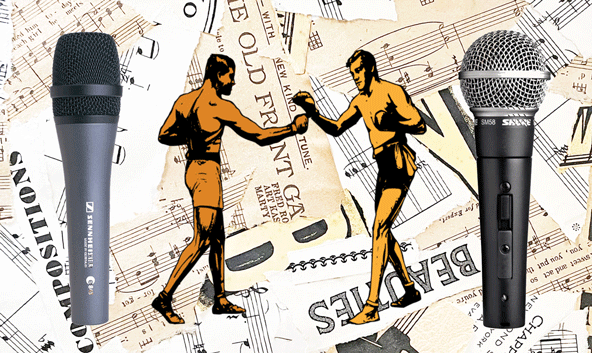
The Sennheiser E835 microphone is often compared to the Shure SM58.
The Shure SM58 is a well known and established vocal mic which has been around since 1966. It’s considered the industry standard for live and sometimes studio use.
The E835 and the SM58 are actually very similar mics, and I suspect the E835 was developed by Sennheiser to be a direct competitor. Both the Shure SM58 and E835 are metal bodied, handheld dynamic cardioid vocal mics, with a similar frequency range. They both excel in live performances, each with an internal shock mount and with excellent feedback rejection. And they’re both available at a similar budget price.
The difference between the two mics is how they sound. The Shure SM58 is a warm sounding mic, which can make it susceptible to sounding a bit muddy on some voices. Though this is nothing that a bit of EQ won’t fix. It also responds keenly to the proximity effect, increasing the bass the closer you are to it.
However, the Sennheiser E835 is an overall brighter sounding mic. Compared to the Shure SM58, you’re less likely to have to use EQ to get the vocals to stand out in a busy mix. It has a naturally clear and crisp sound which is well suited to most voices. Unlike the SM58, the E835 doesn’t respond so aggressively to the proximity effect, and can work well with vocalists who like to be (or need to be) close to the mic.
There’s no winner between the two – they have different characteristics which will suit different voices and situations. It could be said that the Sennheiser E835 is likely to sound the best ‘out of the box’, with no EQ.
Holding the E835
Where you hold the microphone in relation to your mouth can make a big difference in sound. Professional vocalists are always repositioning their mics to change the tone and add expression to their performance.
Always hold the mic by the main body, and if there’s too much sibilance, try holding it slightly to the side.
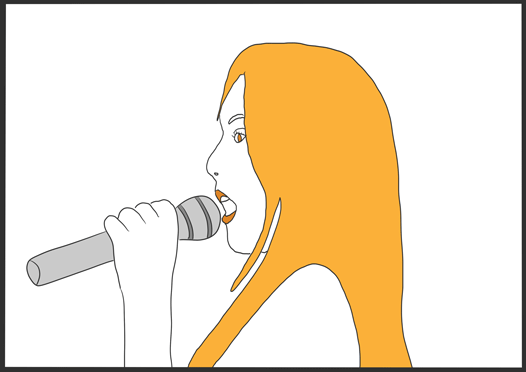
When you have other instruments in close proximity and you just want the sound of the voice, it’s best to sing or speak directly into the mic. This will add more bass to the sound, due to the ‘proximity effect’. It’s an effect used by radio presenters to give them very deep voices.
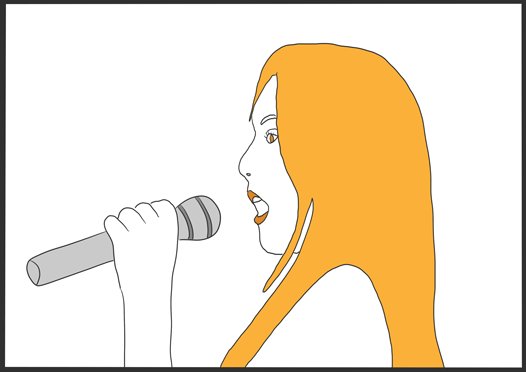
For a more natural, balanced sound, hold the mic between 5 and 10 cm away from your mouth. There’ll be less of the proximity effect, and the mic will pick up more sounds from other instruments, and the acoustics of the room.
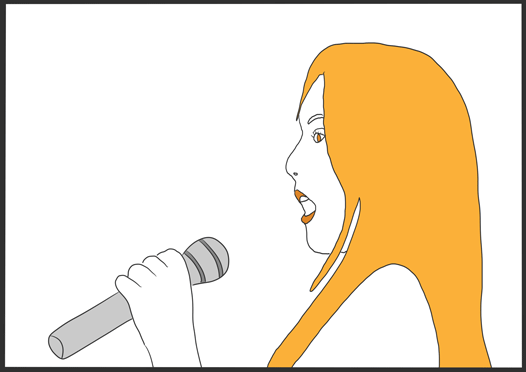
To bring in more of the room sound, and the instruments around you, hold the mic 10 cm or more away from your mouth. This is also a good position for any sudden loud notes, or to shape, and tail off a long note.
E835 vs E845
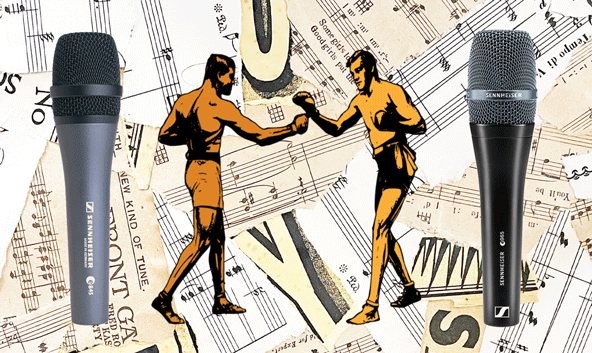
It’s worth noting that the Sennheiser E845 microphone is very similar to the E835, the only difference being that it has a super cardioid, rather than the E835’s cardioid pick up pattern. This gives it a tighter pick up pattern, making it more efficient at rejecting unwanted noise, instruments or room characteristics.
The E845 has a generally warmer sound than the E835, which can sound great in the studio, but necessarily what you need for live use with a backing band.
What else do you need?
With any microphone, you’ll need:
- Microphone stand
Mic stands reduce any handling noise in the studio. Try a good quality boom stand, with a tripod base like the K&M 210/2
- XLR cable
If you want the best quality XLR cables, try these. Go for the shorter lengths where possible.
- Pop shield
This is to stop little bursts of air causing bassy pops on your studio recordings. You can easily make one of these out of stockings, or buy one here.
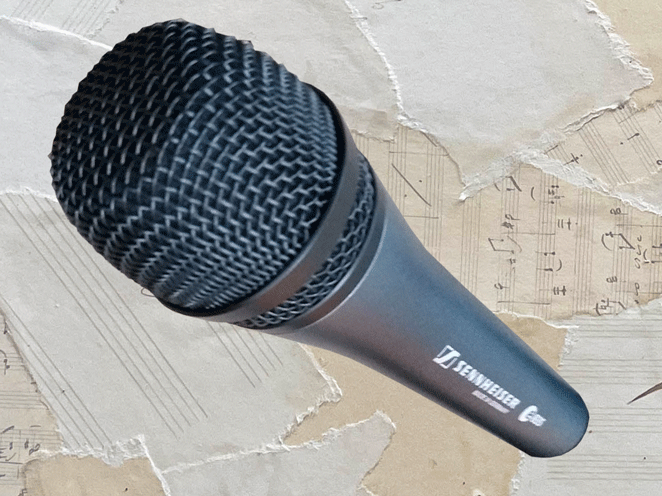
Conclusion
The Sennheiser E835 mic is a well engineered, solid vocal microphone suitable for both live use and home recordings.
A great addition for the studio collection, the E835 will minimise the sound of untreated rooms, recording only what is in front of it. As well as vocals and speech, it will also find uses in instrumental recordings. Its ability to handle high sound pressure levels, makes it particularly suited to louder instruments.
With a bright and clear sound, it’s a true alternative to the Shure SM58, and in some scenarios will be the better choice for vocals.
Frequently Asked Questions
Do Sennheiser or Shure make better vocal mics?
Both Sennheiser and Shure make top quality vocal mics. Shure are more well known, but Sennheiser have a solid reputation within the music industry
What pick up pattern is the E835?
The Sennheiser E835 has a cardioid polar pattern, making it ideal for stage use, as it only picks up sound from the front of the mic
How do I clean an E835 microphone?
Use a 70% alcohol solution sprayed onto a soft cloth to wipe down the body. To clean the head grille, twist it off, remove any foam and use a brush with 70% alcohol solution. Use warm water to clean the foam.
